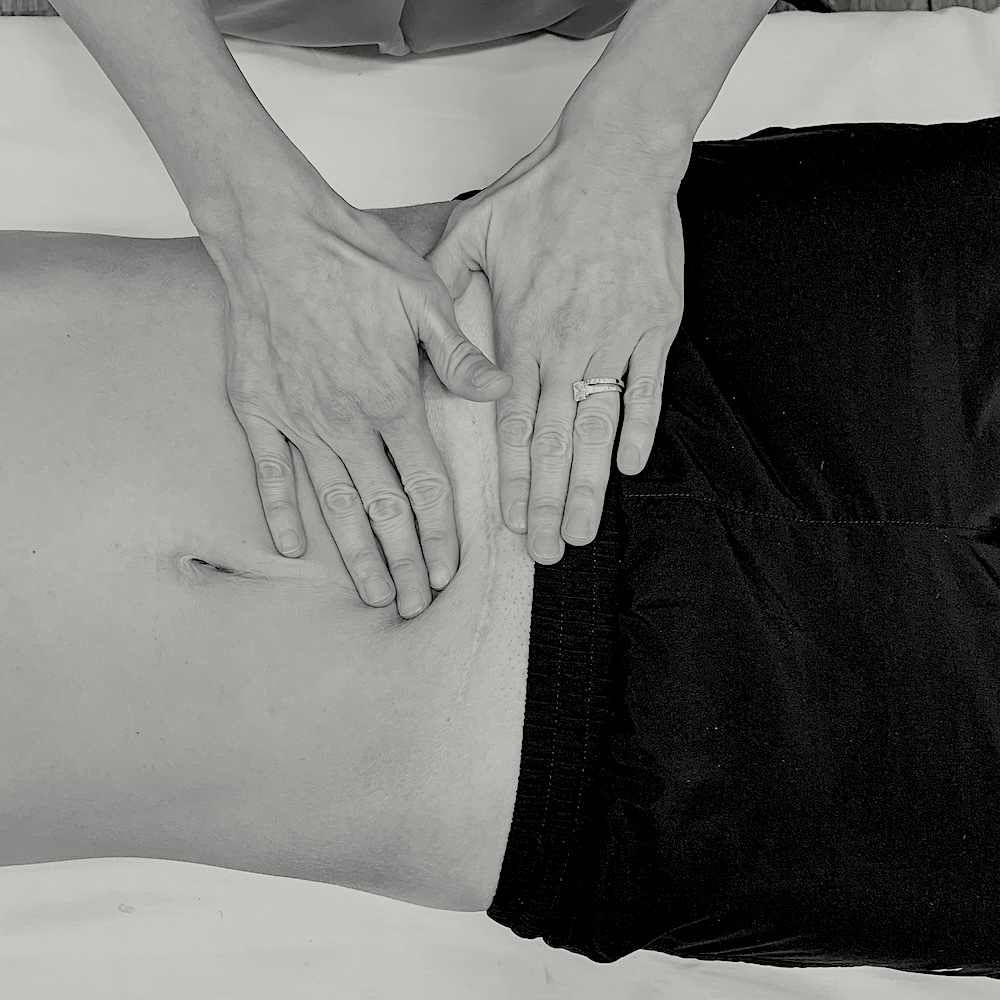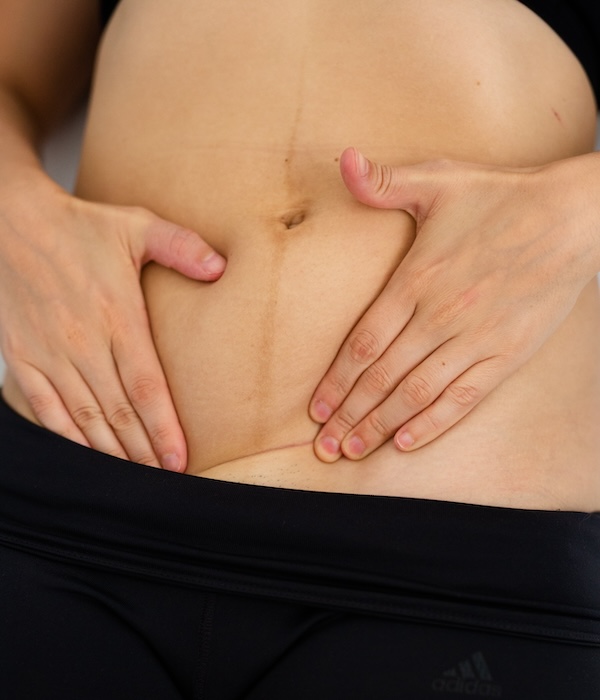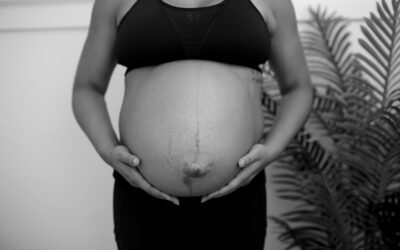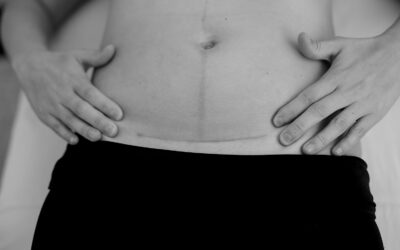Postpartum maternal care leaves something to be desired here in the US, especially when it comes to Cesarean section recovery. Particularly the education on how pelvic floor physical therapy after c-section can be a beneficial part of recovery.
I often hear women say, “I had a cesarean, so I don’t think pelvic PT would help me”. In reality, not needing pelvic floor pt because you didn’t deliver vaginally could not be further from the truth!
Pelvic PT can absolutely be hugely beneficial in helping recover from a C-Section. Including, helping reduce pain and improving mobility, function, and quality of life.
How a C-Section Affects Your Pelvic Health
Our postpartum bodies are different from our pre-baby bodies, no matter the type of delivery you had. Your pelvic floor is a big player in both vaginal and cesarean births, and is affected by pregnancy prior to delivery.
A cesarean delivery does not require the baby to pass through the vaginal canal. However, the pelvic floor muscles, vaginal, and vulvar tissues sustain stress during pregnancy. This stress can cause issues with urinary, bowel, and sexual function.
Patients who have had a cesarean delivery can experience restriction of the tissue around their healing incision. This can lead to pain and limited function post pregnancy.
Although many of these impairments are common, they are NOT normal. Looking into physical therapy after c-section can get you a thorough evaluation to assess the function of all these tissues.
What to Expect in Physical Therapy after C-Section
One of the first places a pelvic PT will likely assess is the connective tissue of the abdomen. This is where cesarean patients commonly experience numbness or pain, tightness, and mobility restriction of the scar. They may also have difficulty activating the abdominal muscles.
The pain a patient may experience following a cesarean can vary from diffuse abdominal pain to local pain along the incision. In addition, it may present muscular pain or pull with activity, hypersensitivity to touch, and numbness along the scar.
Pain can cause difficulty with everyday activities and exercise. It can also lead to an aversion to wearing certain clothes and touching the scar. This is usually due to scar tissue and myofascial restriction to the connective tissue surrounding the scar.
Pelvic Floor Assessment via Internal Exam
A pelvic floor physical therapist will likely do an internal vaginal exam (with consent). This helps determine how well your pelvic floor is able to contract and relax. This also helps determine if there are any areas of tightness (trigger points) in these muscles.
This is important as we need full contraction of these muscles to hold in urine and poop. They also support our internal organs with daily activity and exercise, and play a role in sexual function.
Equally important is the ability for these muscles to relax. This relaxation is necessary to empty our bowel and bladder, and again for sexual function.
And yes, these muscles can be weak, tight, or both even if you did not have a vaginal delivery.
Tissue Restriction from Cesarean Scar
Scar tissue restriction from an abdominal or cesarean scar can contribute to all of the below.
- Cesarean shelf
- Painful sex
- Pelvic pain
- Back pain
- Painful ovulation and menstruation
- Straining during bowel movements
- Unable to empty bladder
- Section incision site feels numb, fuzzy, painful or sensitive
What is a Cesarean shelf?
In many cases, these scar tissue adhesions can be so significant that they cause a “shelf.” A shelf occurs when the various layers of healing tissue along the incision adhere to one another, and, therefore, the scar becomes indented.
Over time, the tissue just above the scar can puff out, creating a shelf. This can be both painful and a source of insecurity for many women. Most patients can be treated with pelvic PT, although there are some severe cases that may require a consultation with a plastic surgeon for scar tissue revision.
Causes of Cesarean Shelf
- Giving birth via cesarean section
- Having an incision that is too tight
- Scar tissues, extra fat, and excess skin
- Having loose skin
- Diastasis recti
What Pelvic Floor PT Can Do
- Test for DR (which might contribute to the cesarean shelf)
- Scar massage
- Belly massage
- Core work / abdominal etc
- Diaphragmatic breathing
What You Can Do to Help Your Cesarean Scar
MASSAGE YOUR SCAR. Immediately after childbirth, this area will feel very numb. Start gently massaging 2-3 inches around your scar to promote healing, blood flow, and sensation back to the area.
After six weeks postpartum, you can begin to massage the scar. You want to move the scar up and down, and side to side. You can spend extra time on the areas that feel tightest and hardest to move around.
Spending 2-3 minutes a few times a week on scar management will help the scar be softer, flatter, and less purple. It can also help avoiding a C-Section shelf, pain with sex, discomfort wearing pants, and peeing and pooping problems.
Whether your surgery was six weeks ago, six months ago, or six years ago, it’s never too late to start!
If left untreated, a cesarean shelf can cause:
- “C-section pooch” (belly pooch)
- Pain with sex
- Discomfort wearing pants
- Bladder problems
- Pooping difficulties
Assessing for Diastasis Recti
When going in for your physical therapy after c-section, you will also likely be evaluated for potential diastasis recti. The therapist will assess your ability to properly activate your transverse abdominis and correctly manage the pressure in your abdomen.
Improper pressure management can lead to unwanted stress on the healing abdominal tissues. This increases the risk of diastasis recti, and increased risk of pelvic floor dysfunction.
What does Pelvic Floor Physical Therapy After C-Section Look Like?
Some of the things that can be done in pelvic PT include:
- Manual Therapy. Manual therapy and myofascial release to the scar itself and abdominal tissue surrounding the scar. These are techniques where the therapist will perform hands on connective tissue release to reduce scar tissue adhesions and improve mobility. These techniques can also improve blood flow to the area to help promote healing.
- Desensitization. Desensitization to the scar and tissue directly surrounding the scar using items of varying texture. This helps reduce hypersensitivity of the scar, and can improve pain at the scar site. This includes using items such as tissues, towels, q-tips, makeup brushs, etc.
- Dry Needling. Dry needling is used to improve blood flow to the area, promote healing, and reduce adhesions from scar tissue formation.
We will also work with you to regain strength in your abdominals and core, so that you can get back to physical activity safely.
Try Pelvic Floor Exercises from Home with the V-Hive
Recovering from a C-section is a journey, and pelvic floor physical therapy can be a game-changer in helping you heal, regain strength, and improve your overall well-being. If you’re in the early weeks postpartum and looking for guidance, the Childbirth Recovery Program inside the V-Hive Membership is the perfect place to start. Designed for the first 0-6 weeks after birth, this program offers gentle stretching and strengthening routines, practical tips for post-birth peeing and pooping, and scar massage techniques to support your healing. Join the V-Hive free for 7 days and give your body the recovery it deserves!





